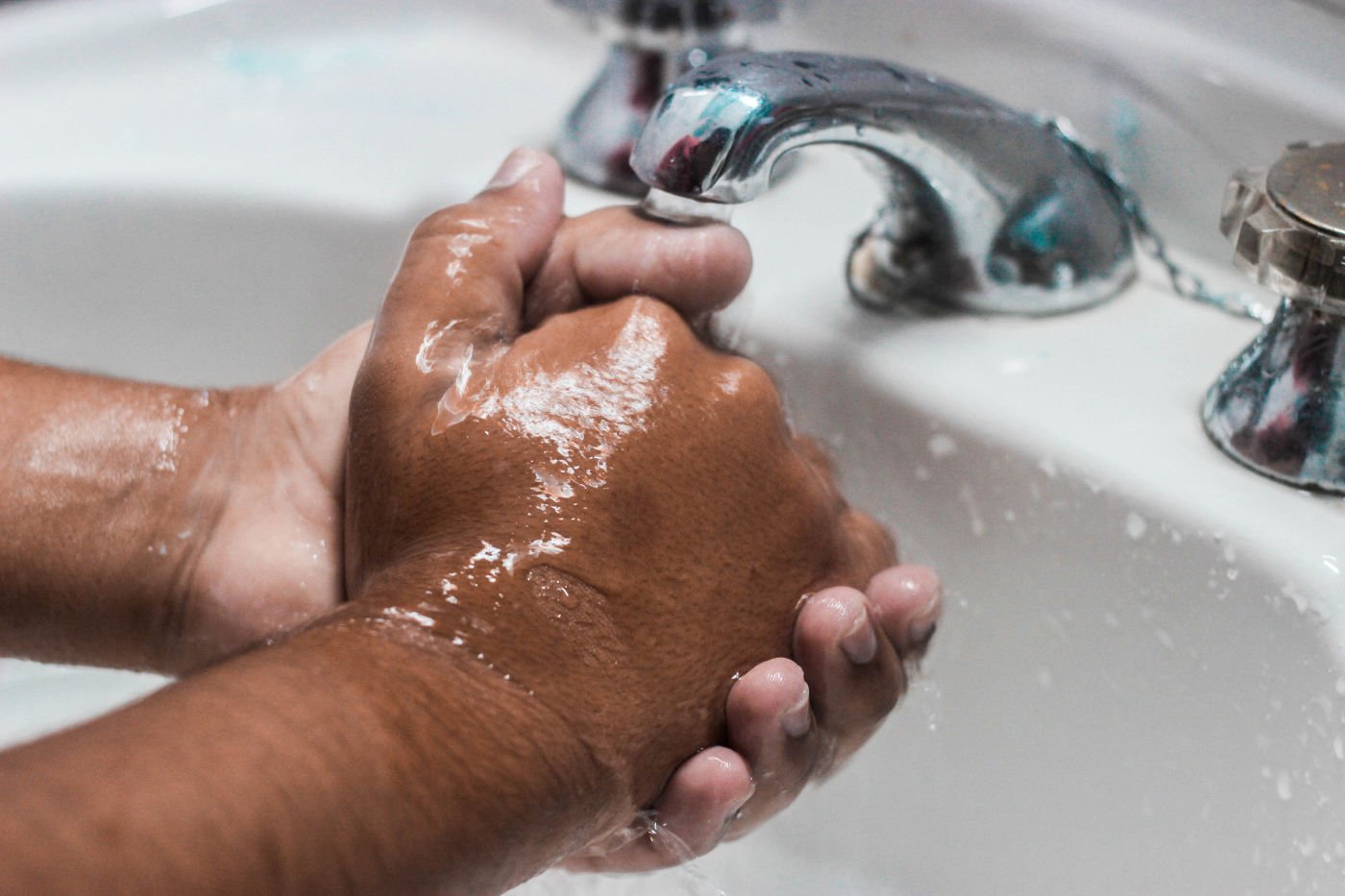
TMV Servicing
What is a Thermostatic Mixing Valve and how does it work?
Thermostatic mixer valve, or TMV, is a fitting used to regulate the temperature of water flowing from a faucet or showerhead. It is a crucial component of the system that guards users from reprimands. Keeping up with regular TMV servicing will keep users safe, and our clients across Somerset, Devon and Cornwall compliant with regulations.
In any structure, it can be challenging to maintain the same temperature of the water flowing from a tap at one end of the property to the other, especially in large establishments like hospitals and schools. The flow of water is regulated to a safe temperature across the site by installing thermostatic mixer valves.
In order to stop the growth of bacteria like legionella, hot water sources like hot water cylinders should be maintained at a temperature of 60oC. As a result, these extreme temperatures could burn the skin. Therefore, blending hot and cold water temperatures is important to ensure safe use, especially when sensitive individuals are present. This is crucial for service user areas and accessible restrooms in the Devon, Somerset or Cornwall area since some users may not be able to get away from the water quickly enough to avoid burning. Some people may suffer from illnesses that prevent them from sensing temperature changes.
TMV Servicing is necessary since data reveal that around 600 individuals in the UK experience significant scalding injuries each year. Children and the elderly are particularly vulnerable to scalding from hot water. Additionally, 75% of those burned were children under the age of five. Thermostatic mixing valve, or TMV, servicing is crucial for this reason.
Scalding Risk in Temperatures
There is a risk of scalding where the water temperature at the output is above 44°C," according to the HSE. This is particularly true in institutions with 'at risk' patients where vulnerable patients, such as the very young, the elderly, those with disabilities, or those with sensory loss, who may not recognise high temperatures and respond promptly, are immersed completely in baths and showers. HSG 274 - p.2163
"If water is given up to 50°C at hand wash basins and employing hot water signs may be regarded acceptable, where a TMV is not fitted, the scalding danger is negligible for the majority of persons. TMV Type 3 (TMV3) are needed, nevertheless, when at-risk individuals are identified and have access to bathtubs or showers and the scalding risk is deemed severe. HSG 274 - p.2.164
What Type of TMV and Where?
A comparison of the danger of legionella infection vs the risk of scalding should be used to guide the use and installation of TMVs. TMVs and TMV Servicing are not necessary when a risk assessment determines that the risk of scalding is negligible.
TMVs should be installed at these outlets because baths and showers, which completely submerge the body, pose the greatest risk of scalding, especially for the very young and elderly. The installation of TMVs (thermostatic mixing valves) at suitable outlets, such as hand wash basins and sinks, is required where a risk assessment identifies a significant burning risk is present, such as where there are very young, very elderly, infirm, or significantly mentally or physically disabled people or those with sensory loss. HSG 274 – p.275
TMV Servicing in Health Care Buildings
"Type 3 TMVs that are pre-set and fail-safe should be provided (but are required at healthcare premises) and should be checked regularly to ensure they are fail-safe if the cold water supply pressure is interrupted," states the FDA. "Where a scalding risk is considered significant, such as where users are very young, very old, infirm or significantly mentally or physically disabled, or those with sensory loss, then should be provided." Thermostatic mixing valves: TMV Servicing & Failsafe Testing (HSG 274)
TMV Servicing for Healthy Users
Building codes mandate type 2 TMVs that can be disregarded by users where a scalding danger is deemed low (for instance, when healthy users submerge their entire body). Thermostatic mixing valves and TMV Servicing in HSG 274
-
Set to 38-43°C
-
Set to 41°C
-
Set to 41°C
-
Set to 46°C
-
Set to 38°C
What temperatures should a TMV be?
How Often do TMVs Need Servicing?
TMV Servicing is needed “Where the risk assessment considers fitting TMVs appropriate, the strainers or filters should be inspected, cleaned, descaled and disinfected annually or on a frequency defined by the risk assessment, taking account of any manufacturers’ recommendations.” HSG 274 – p.2.164
Regular TMV servicing and maintenance check, temperature monitoring and failsafe testing is required to ensure your TMV’s perform at the NHS Model Engineering Specification Level. If a valve fails a TMV servicing and maintenance test, the valve must either be serviced in accordance with the NHS Model Engineering Specification, or if it can not be serviced it should be replaced.
To show that acceptable thermal performance is being maintained, regular and ongoing TMV servicing maintenance tests and failsafe testing should be conducted.
Visual Inspection
Review the installed TMV to ensure correct specification valve is installed where required.
Temperature Control
Undertake temperature check and re-calibrate where required.
Failsafe Test
Ensure TMV failsafe mechanisms operate correctly to protect users in the event of water supply failure.
What’s Included in a TMV Service?
Based in Devon, our team of experts can complete TMV servicing for clients based in and around the Somerset & Cornwall areas and beyond.
Clean, Descale & Disinfect
Clean, descale and disinfect any strainers or filters.
TMV Servicing FAQs
-
A TMV uses a mixed water temperature system to control water temperatures. Owners of properties with hot water outputs are required to install a TMV3 valve. As a result, the water supply temperature in the building will be set to comply with UK safety guidelines for water outlets. Additionally, it is necessary to isolate the cold water supply and perform routine failsafe testing to guarantee appropriate water temperatures. This safeguards the security of those who might be harmed by very hot water temperatures.
-
In social care services, hot water outlets must be used at a temperature of 39°C or lower. The principal method of preventing the growth of Legionella bacteria in hot water systems according to TMV health and safety requirements for hospitals, healthcare facilities, and social care services is the use of high water temperatures. According to current Department of Health recommendations, hot water used in social care services should be held at a minimum temperature of 60°C and utilised in a mixture with cold water at a minimum temperature of 55°C. Health and safety regulations call for routine TMV cleaning, descaling, and disinfection.
-
To make sure you are properly reducing the dangers of legionella, water quality standards must be followed and routine valve component maintenance must be carried out. When you service TMV, you can inspect the fine mesh of the TMV3 Valves using remedial works and services. It is essential to confirm that your water quality requirements, safe water temperatures, and safety standards adhere to the guidelines established by the NHS. TMV Water treatment also involves corrective actions including sanitization, descaling, and cleaning.
-
A legionella risk assessment is one of the duties that duty holders, such as employers and those in control of premises, have under the Health and Safety at Work Act of 1974 and in accordance with the Approved Code of Practice (ACoP L8, HSG 274) to ensure the health and safety of their employees or others who may be impacted by their undertaking.
To avoid, manage, and control the risk of exposure to legionella, precautions must be taken. consisting of routine descaling, disinfection, water cleansing, maintenance, and monitoring. To achieve this, take the following actions: an engineering and water treatment expert's legionella risk evaluation.
